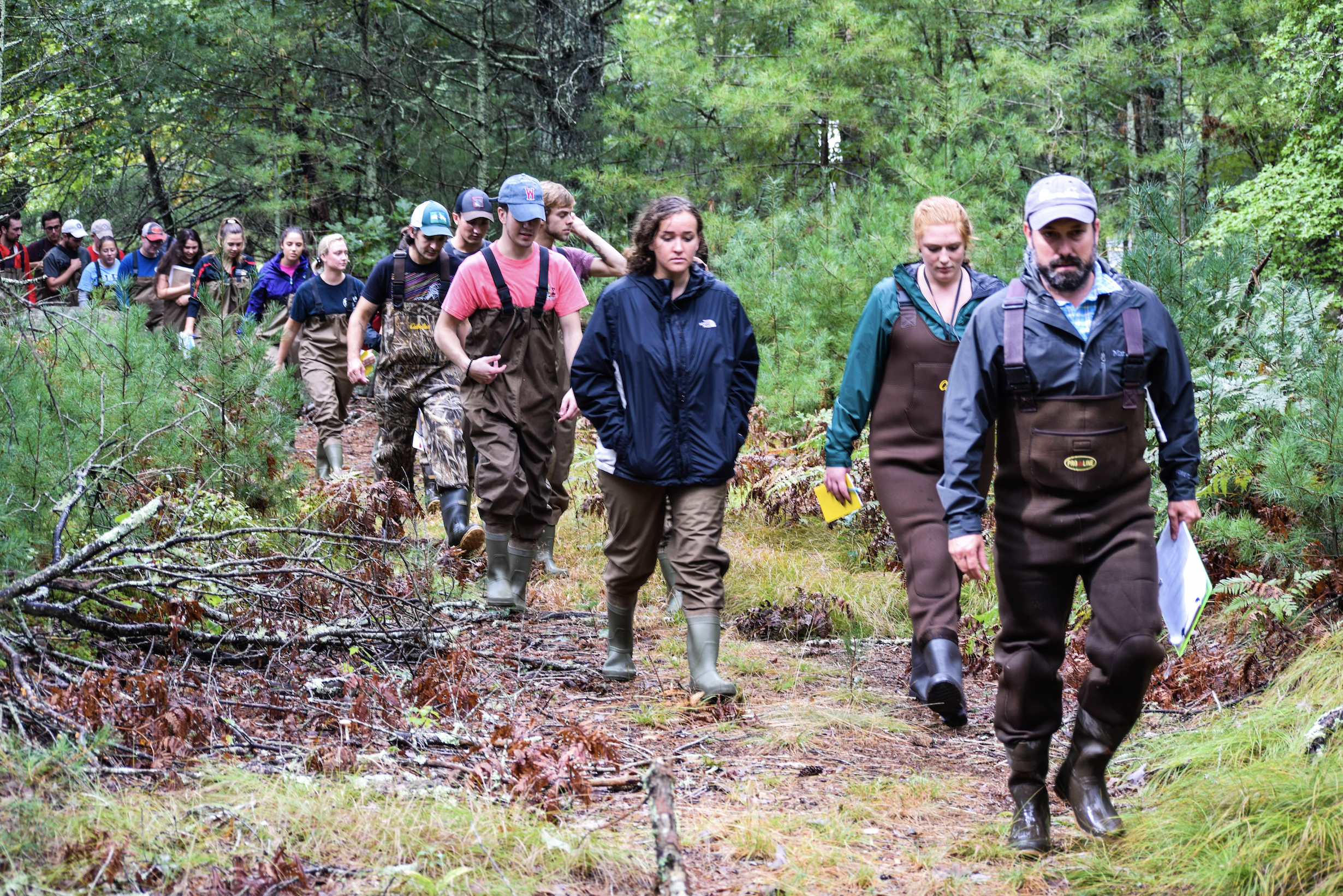Photo by Anna Meassick | Students in NRS 423 trek through wetlands as part their weekly four-hour lab.
Wetland Ecology, an upper-level class in the College of Environment and Life Sciences, takes students beyond the typical classroom setting by traveling to different wetlands throughout the area each week.
This course combines a classroom and field setting with two one-hour lectures and one four-hour lab or field trip a week. Often the spots are taken up by wildlife biology and environmental science majors, but the class is not limited to students within those fields.
The lecture portion covers the fundamentals of wetlands; including studies on soil, plants, hydrology, animals and environmental laws. The lab or field trip part of this class a bit more complex.
Students are brought out into the wetlands, dragging themselves through water with their greatest fashion statement: waterproof boots and attire for the lower-body. During these labs, students can see wetland creatures and plants in person, an experience they wouldn’t have sitting in a classroom. The goal of the class is to develop an appreciation for wetlands while learning how they are protected and regulated.
There are two professors who teach this course at the University of Rhode Island: Dr. Brett Still and Dr. Nancy Karraker. Still has been teaching this class for three years, and previously worked in the field as a wetland consultant. Still’s decision to teach the class expanded the capacity to double what it originally was by adding a second lab section.
Since the course is a very hands-on, the capacity is low. A smaller class can be more manageable, and in this case, the field work with an expert faculty member allows the teacher to pass on valuable knowledge in a different way than a simple lecture would. This method fosters a deeper connection with the teacher and the material.
Both professors eagerly mentioned the many students who have come back to them for professional references, or just to thank their teachers. “I have a huge folder of cards and letters and emails from students who’ve said, ‘your wetland ecology class is the best class I’ve ever taken. It gave me confidence. It gave me problem-solving skills,’” said Karraker.
Experience is the main goal of this class. Karraker, who has taught the class for six years, emphasized the connection to a real job. She explained that the class helps students to gain skills that will be used in the future, not just learn information.
“The biggest challenge with this class, challenge in the good sense of the word, was coming up with these kinds of problem-solving exercises that help students build their confidence and apply their knowledge to solve,” Karraker said. “You know, if you sit in a classroom all the time and people just talk to you, it doesn’t really give you a whole bunch of skills when you leave.”
Karraker specifically makes sure to add class exercises to her teaching, forcing her students to think creatively to set up a solution or figure out how to find the borders of a wetland area in the field.
Still uses the ideas from his ecology class to bring more interactive learning and engagement to his larger lecture courses. “I think it’s critical, they have to be able to demonstrate certain field skills,” Still said. “They have to be able to recognize wetlands in the field.”
Karraker recently came back after spending eight months in Indonesia with two URI students, studying the Southeast Asian Box Turtle. Their research is meant to help reduce the buying and selling of that turtle and educate the public about the species. The two URI students will be co-authors of the important papers that connect with the study. Karraker encourages her students to pick up side projects and research, emphasizing creativity and confidence in a person’s skills.
Students learn better with active learning, discussions and participation. To expand this philosophy, more teachers are trying to create an active learning environment and add to the growing number of field classes.
“Being able to take that knowledge and make change with it, be creative with it, that’s the part that a lot of students don’t get practice at,” Karraker said.
The professors in the rest of the department share these ideas as well, creating classes that foster deep connections with the source material and the faculty that teach it.

